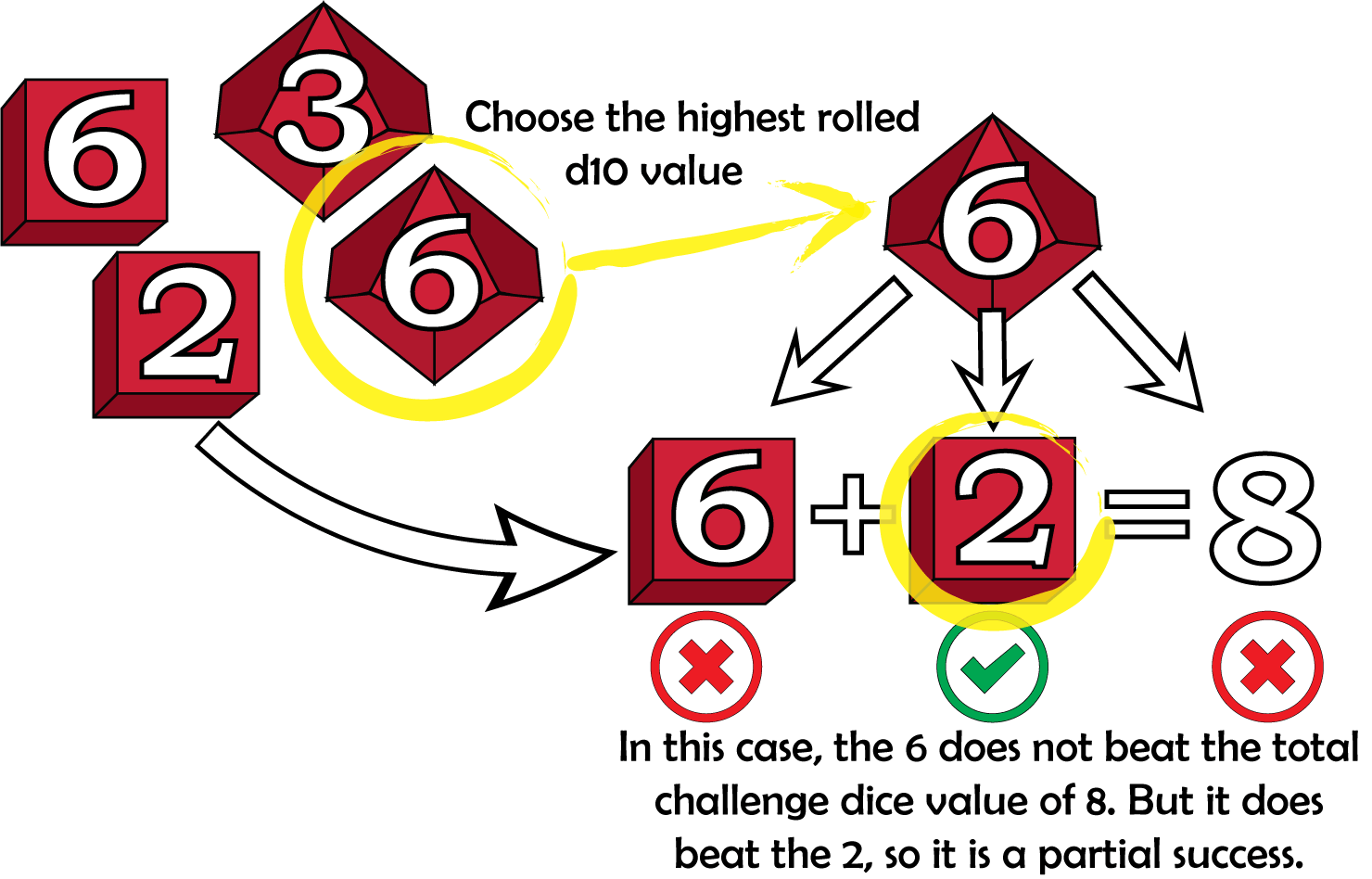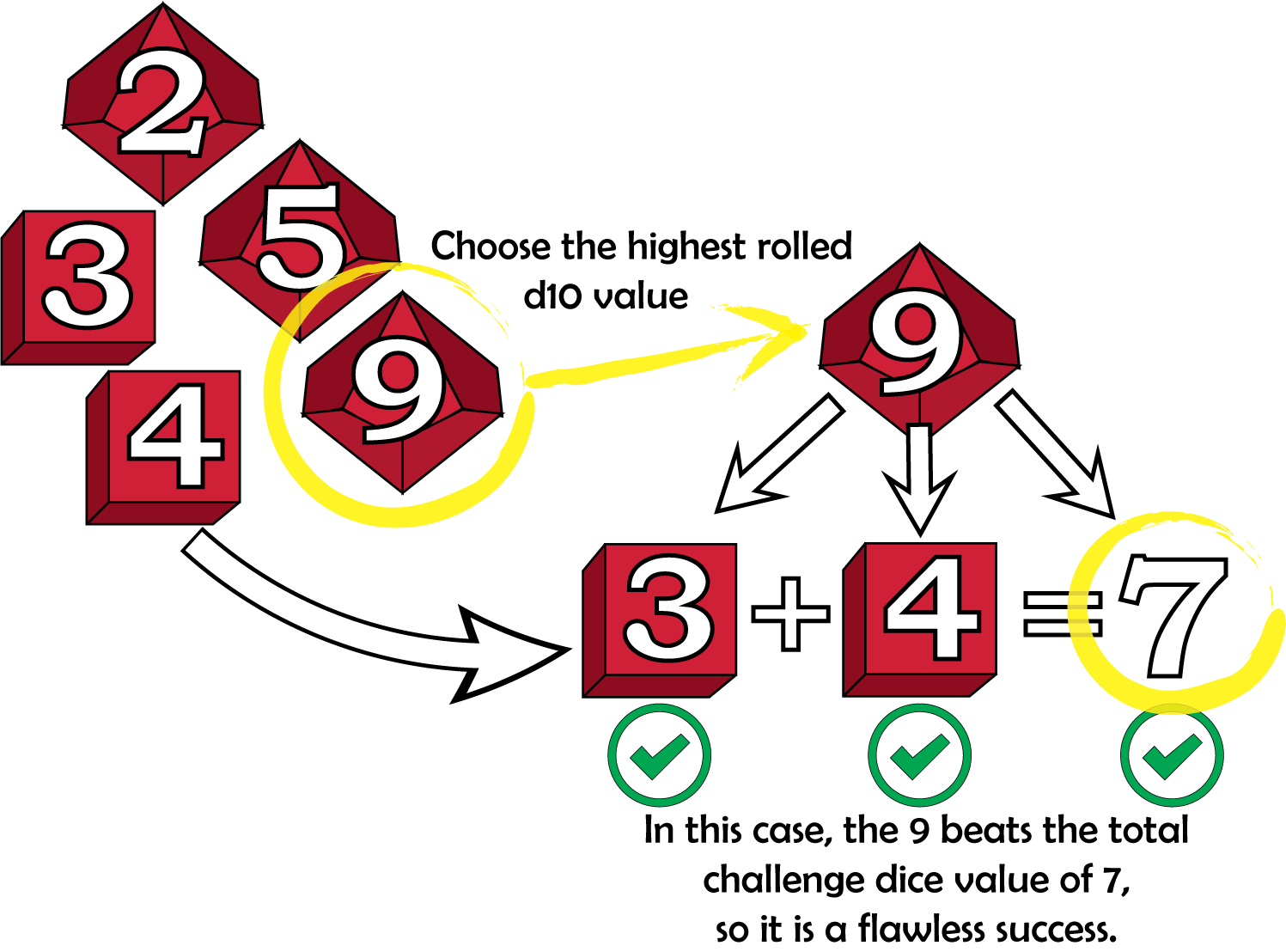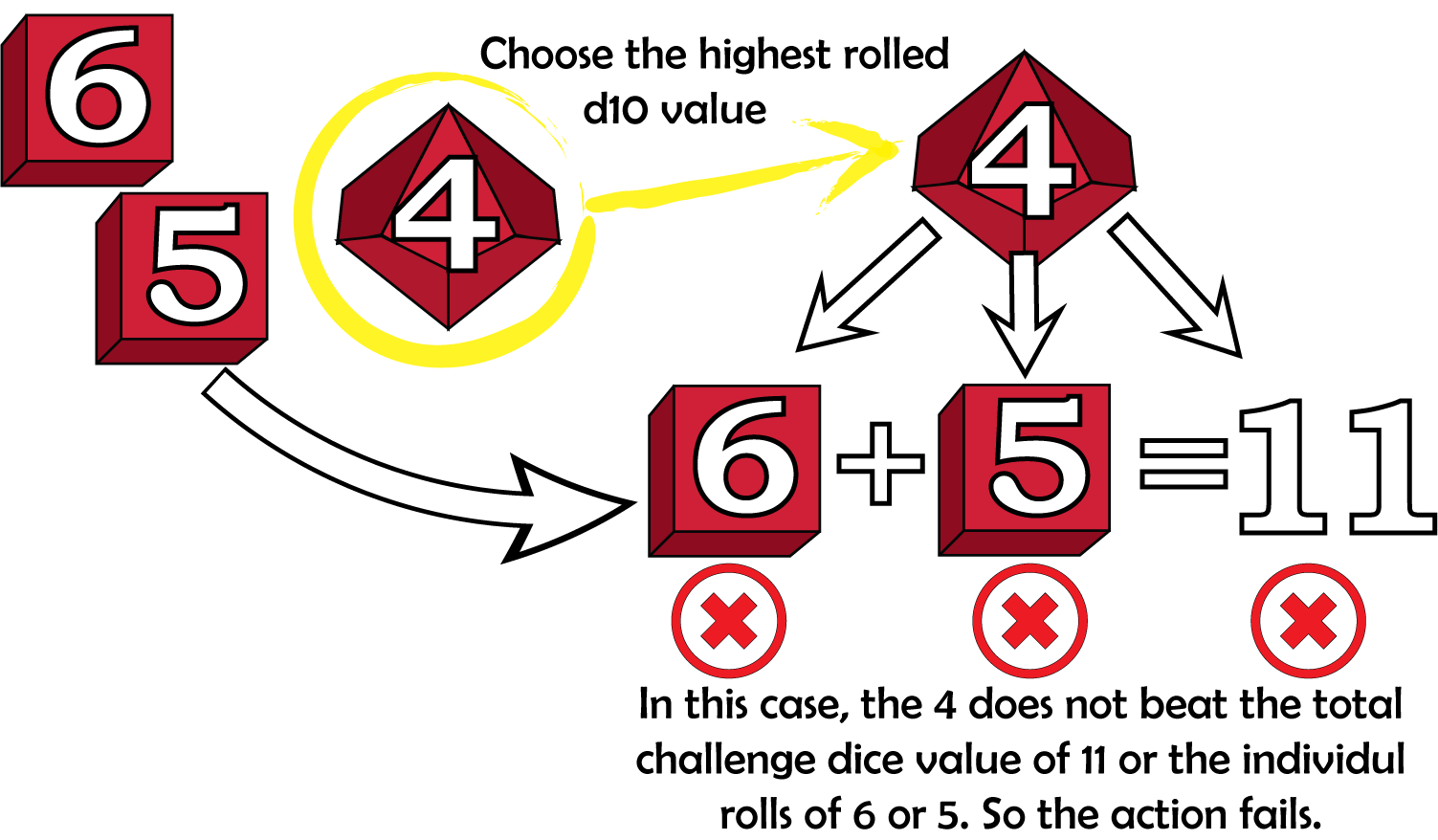10acity Storyteller is a lighter version of the 10acity system designed for narrators who wish to focus more on a story and less on the mechanics of a game. The ruleset here is scaled back to provide quicker and simpler conflict resolution so that the mechanics of the system gently supports your story without “ruling” it. 10acity Storyteller is no less of a complete system than 10acity Tactics, it is simply a rule set designed to be more streamlined and easily managed.
First rule of Storyteller is that you don’t talk about Storyteller… at least not in the idea of having to reference rules as written. The idea is to have less looking up anything and more moving forward with the story. You are still going to use the attributes and skills for challenge resolution, and the talents, stances, and advancements for your special abilities. But you’ll be focusing more on the narrative rather than the tactical. Storyteller is really about creativity and freedom of expression. As such, we strip down the tactical aspects that require you to keep track of various numbers throughout the game. Those aspects are great on a battle map with tokens and trackers, but if you would rather play through theater of the mind then keeping track of all those numbers is more hassle than benefit.
Actions are straightforward and simple. You explain what you want to do then roll the challenge dice (alwayse 2d6) along with the number of skill dice (d10's) listed for the appropriate skill. Take the highest rolled d10 skill die rolled and compare it to the 2d6 challenge dice. If your highest d10 skill die is greater than both of the 2d6 challenge dice added together, then you flawlessly succeed in your action. If your highest d10 skill die result is greater than one of the rolled d6 challenge dice, but not both added together, then you partially succeed. If your highest skill die result is not greater than any challenge die rolled, then you fail the action.
Example 1: Missa is trying to hack her way into a computer terminal to open a sealed door. She has 2 dice in her intelligence skills, so she rolls two ten sided dice (2d10) along with the challenge dice (always 2d6). She gets a 3 and a 6 on her skill dice, which means her final result is 6. For her challenge dice, Missa rolled a 2 and a 6 for a total of 8. Missa's highest d10 roll of 6 does not beat the challenge total of 8 so she does not flawlessly succeed. But when she compares her 6 to the two individual challenge dice, she sees that her 6 does beat the 2, so she partially succeeds, which means she did it, but something didn't go as planned. She discusses with the narrator the possible things that could go wrong, and they both settle on the result that Missa did bypass the security, but she was discovered by a monitoring program to be accessing the terminal without permission. The door slides open, but now the security team knows that the building was hacked and what door, which means Missa's team now has a lot less time to do what they came to do before security comes.

Example 2: Manuel is trying to talk his way past a bouncer to get into a club. He has 3 dice in his charisma skills, so he rolls three ten sided dice (3d10) along with the challenge dice (always 2d6). He gets a 2, a 5 and a 9 on his skill dice, which means his final result is 9. For his challenge dice, Manuel rolled a 3 and a 4 for a total of 7. Manuel's highest d10 roll of 9 beats the challenge total of 7 so he flawlessly succeeds in talking his way past the bouncer without even having to bribe him or anything.

Example 3: Fiona has come to the edge of a cliff and needs to try and climb down before the pursuing thugs can get to her. She has 1 die in her vitality skills, so she rolls one ten sided dice (1d10) along with the challenge dice (always 2d6). She gets a 4 on her skill die. For her challenge dice, Fiona rolled a 5 and a 6 for a total of 11. Fiona's d10 roll of 4 does not beat the the challenge total of 11, nor does it beat the individual rolled challenge dice values of 5 or 6. Therefore, she fails at this task and goes tumbling down the cliff side in her panic.

Attacking
Combat actions work exactly the same way as standard actions except that your result can now deal damage, create a condition, or establish a situational advantage against an opponent.
Defending
One major difference that you will find in 10acity Storyteller when compared to conventional rpg games is that NPC opponents never roll an attack. In fact, the narrator hardly ever needs to roll dice at all. All of the action is in the hands of the characters. If an opponent attacks a character, the narrator will call for a defense roll from that character. When they roll their defense, they include the challenge dice (alwayse 2d6) just like in any other action roll along with the number of skill dice (d10's) listed for the appropriate defense skill. The challenge dice represents an NPC's attack or defense based on the action. NPC opponents themselves will have different resistances, weaknesses, play styles, damage capacity, possible innate bonuses or negatives, and special abilities which can affect dice values, reroll dice, give bonuses, or do cool and epic things like the ability to breathe fire or trample which makes them all feel unique even though they all use the same challenge dice as part of the character's attack or defense action.